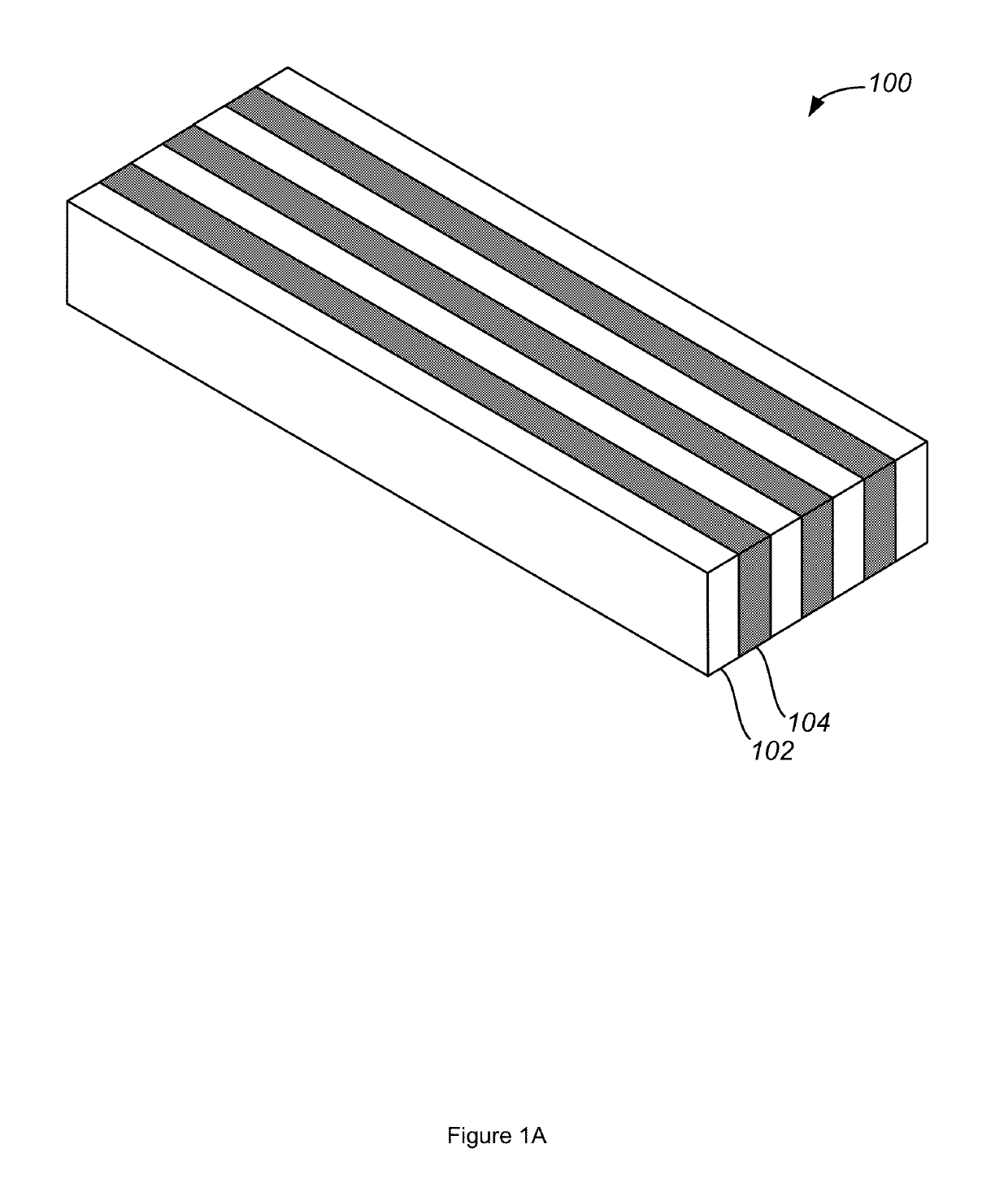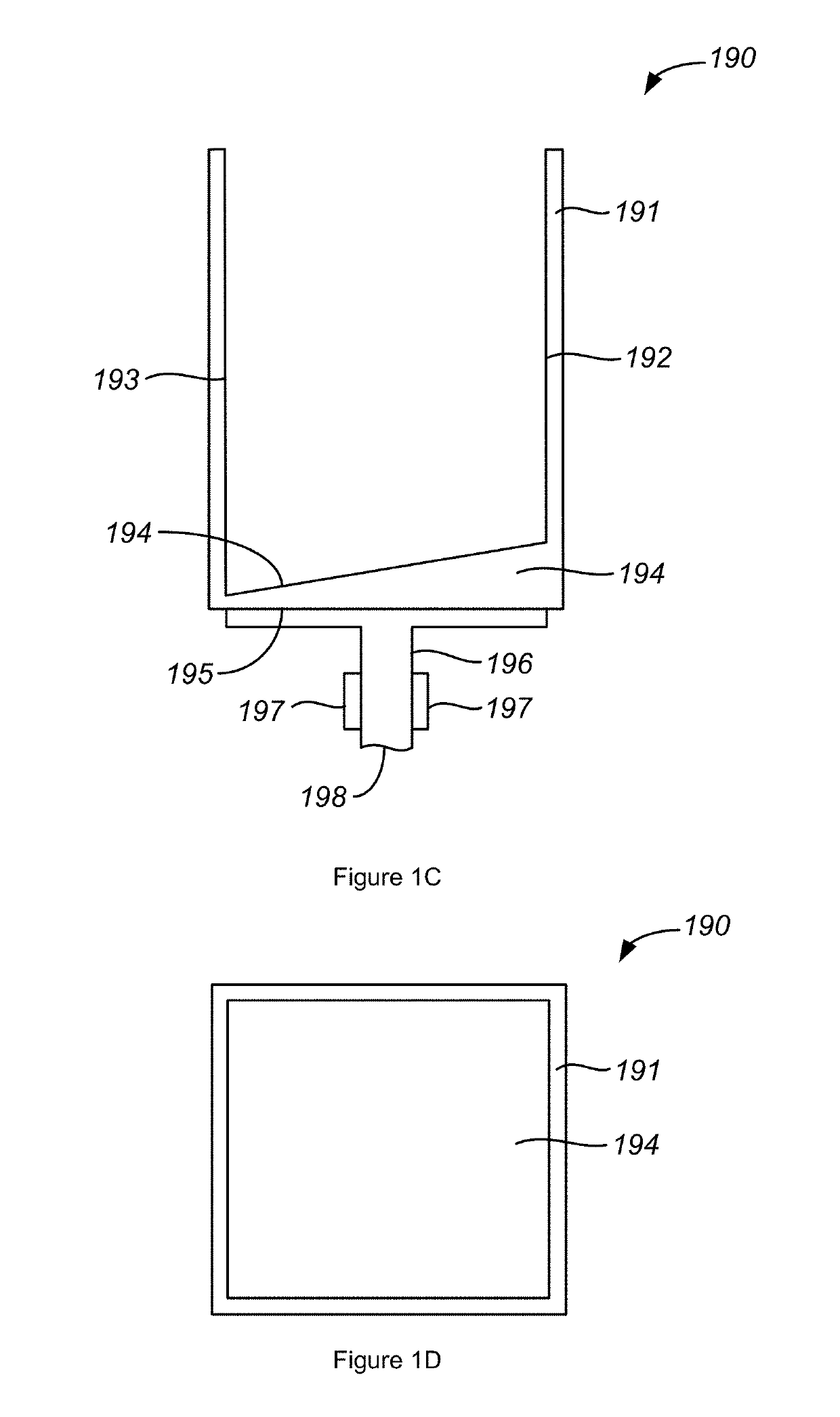Bidirectional freeze casting for fabricating lamellar structures
a lamellar structure and bidirectional technology, applied in the field of lamellar structures, can solve the problems of not being able to precisely control the final structure, not being environmentally friendly, too costly, etc., and achieve the effect of a higher level of control over the structur
- Summary
- Abstract
- Description
- Claims
- Application Information
AI Technical Summary
Benefits of technology
Problems solved by technology
Method used
Image
Examples
example 1
[0050]This example compares conventional (i.e., unidirectional) and bidirectional freeze casting. In this example, the slurry that was freeze cast was prepared by mixing distilled water with hydroxyapatite (HA) powder (density, 3.15 g / cm3; d50 (median particle) size, 2.424 μm; 20 volume %), 1 weight % of sodium polyacrylate (e.g., Darvan 811 (R.T. Vanderbilt Co., Norwalk, Conn.)) as dispersant, 1 weight % of poly(ethylene glycol) as lubricant, and 2 weight % of poly(2-ethyl-2-oxazoline) (e.g., Aquazol (International Specialty Products Inc. (ISP), Covington, Ky.)) with a molecular weight of 50,000 g / mol as binder. The slurry was ball-milled for around 24 hours.
[0051]For the bidirectional freeze-casting apparatus, the cooling stage comprised a liquid nitrogen tank and a copper rod, on top of which a Teflon mold (18 mm×18 mm×40 mm), along with a PDMS wedge and a copper plate, was placed. A ring heater, coiled around the copper rod, was linked to a power unit controlling the cooling rat...
example 2
[0064]This example describes a material that can be fabricated with the methods and apparatus described herein. Using the bidirectional freeze-casting method described in Example 1, a hydroxyapatite (HA) scaffold with long-range aligned lamellar structure was prepared by bidirectional freezing. The scaffold was then further densified and infiltrated with a compliant layer (PMMA) to generate a nacre-mimetic composite as large as 4 mm×8 mm×25 mm (currently limited by the size of the mold, although theoretically scalable). This composite can reach ceramic contents as high as 75-85 volume % which was controlled by pressing the scaffold to different thicknesses. In comparison to its constituent materials, the composite displays a combination of mechanical properties of an elastic modulus on the order of 20 GPa, a bending strength of ≈100 MPa, with a work of fracture as high as 2075 J m−2 (some 100 times higher than monolithic HA). Hydroxyapatite is not a structural ceramic, but was chose...
PUM
| Property | Measurement | Unit |
|---|---|---|
| angle | aaaaa | aaaaa |
| volume percent | aaaaa | aaaaa |
| diameter | aaaaa | aaaaa |
Abstract
Description
Claims
Application Information
 Login to View More
Login to View More - R&D
- Intellectual Property
- Life Sciences
- Materials
- Tech Scout
- Unparalleled Data Quality
- Higher Quality Content
- 60% Fewer Hallucinations
Browse by: Latest US Patents, China's latest patents, Technical Efficacy Thesaurus, Application Domain, Technology Topic, Popular Technical Reports.
© 2025 PatSnap. All rights reserved.Legal|Privacy policy|Modern Slavery Act Transparency Statement|Sitemap|About US| Contact US: help@patsnap.com



